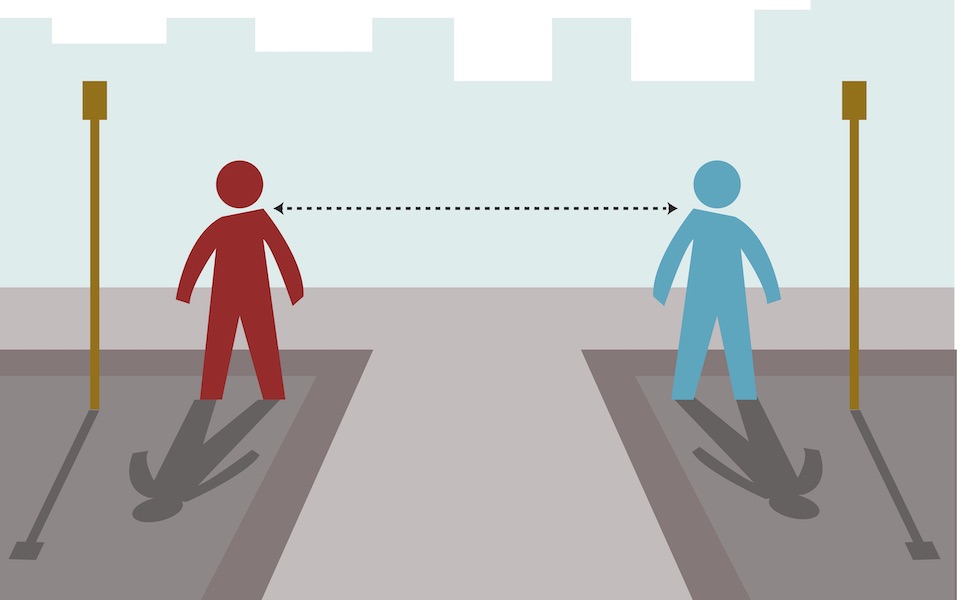Communications Lessons From the Pandemic
By Dr. Imre Varju
April 2021
Communicating complex problems clearly is no small feat.
As a medical scientist and university educator for 10 years, I would often think of myself as someone who understands complex problems fairly well. Still, words can’t express my anxiety when I have to explain a novel biochemical process to my students for the first time.
Just me, the blackboard, and a room full of people watching my every move.
Multiply the weight of the situation infinitely, and you might get closer to what public health professionals have been living through during the COVID-19 pandemic — with millions hanging on their every word.
In my role as a health communications strategist during the COVID-19 pandemic, I’ve had the opportunity to both join the public health conversation and eagerly watch health officials’ attempts to control the narrative in a space of ever-changing data and moving targets.
In this article, I will use my strategic communications and behavior science lens to offer a far-from-comprehensive collage of what worked, what hasn’t, and, perhaps what should have.
Getting to the core of the problem
Behavior science dictates that without clearly understanding the severity of a threat, people tend to decline solutions. Therefore, communicating risk has to start with a clear understanding and a compelling articulation of the problem at hand. Sounds simple, right?
However, at its inception, COVID-19 emerged as an amorphous beast with quickly shifting characteristics. Finding the right focus to frame the issue for the public was not evident. The three framing systems used by professionals were:
1. Individual-focused framing: Early COVID communications by frontline professionals were focused on the case-fatality rate of the disease, or put simply, the chance of dying if I get the disease. The <1% chance, however, mostly did not prove to be an effective focus. It was too easy to downplay this number by comparing it to that of influenza, and by emphasizing how the elderly are disproportionately affected by severe outcomes.
2. Interpersonal-focused framing: Soon, several communicators shifted their focus on the risk that elderly loved ones carry. While this more emotionally resonant framing seemed more appealing to many, it also corroborated a false notion that COVID is mostly an “old-people problem.”
3. Systems-level framing: What could have been more effective is an early focus on the biggest threat of the pandemic — the pressure that hospitalized COVID patients exert on healthcare capacity.
For the sake of playing the much-coveted flu-comparison game, for every 100 influenza cases, there is one that ends up severe enough to occupy a hospital bed. With COVID-19, this number is 10-20 times higher. Certainly, “hospitalization rates” are not as catchy as “case lethality.”
However, the “flatten the curve” movement has come really close to mastering this concept. Using clever visuals, their framing attempted to depict the system-level threat in a clear way. While it gained traction, the missing piece to wider success might have been the effective translation of the curve to a more personal level, as humans are inherently poor at assessing systems-level risk.
Offering actionable solutions
According to behavior science, we need to feel that a solution to a problem a) makes sense and b) seems doable. If these boxes don’t get checked, then we tend to go down the route of dealing with the problem by ignoring it.
Take a simple example. One would think that placing a cloth in front of your mouth both makes sense for a disease that spreads through cough and speech, and also is easy to do. This perception, however, changes wildly after leading healthcare officials first advised against masks and then reversed their position — even if for good reasons.
Once we get over the confusion, there’s still a question of feasibility. At the inception of the outbreak, searching for a mask in Manhattan stores was similar to the game of “Super Mario World” — once you finally arrived at a castle, you were told that the princess you were looking for is in another one.
Minding the gap
Once we find the right way to formulate the problem and offer the right solution, we’re not halfway done. Finding the means to speak the same language is the next herculean task.
The average U.S. citizen reads on a 7th-to-8th-grade level. This means that more than half would not be able to read and understand “Jurassic Park.”
More than 70 percent of them would not be able to digest this very paragraph. I have the luxury of saying “that is OK,” because I am talking to a very specific audience. (Yes, you made it!). However, public health officials need to craft their messages in a way in which a wide range of audiences will comprehend. Plus, reading levels are just the front door of a more relevant skill to understanding a pandemic, namely: health literacy, or the ability to obtain, comprehend and act upon health information.
Furthermore, the way people interact with health information does not happen in a vacuum. Cultural aspects, such as deep-rooted mistrust in Western medicine in many underserved communities, interplays with how they assess health information.
Segmenting audiences and creating tailored messages for each can address general literacy gaps. However, when it comes to cultural sensitivities and gaps in trust, communicators need to be ready to “pass the mic” to voices that resonate better with the specific target audience. Some of the most recent vaccination campaigns have already realized this in the vaccination phase of the pandemic.
Cutting through the noise
To make life even harder, in an era of a raging misinfodemic, there is constant competition for the attention of audiences. Public health communicators need to avidly monitor misinformation and allocate resources to systematically debunk false claims, which Johns Hopkins University, one of the world’s leading public health schools, showcases through its work.
However, they need to go further. Misinformation obeys the laws of physics. When sections of the internet lack credible information, this vacuum sucks in whatever is most abundant nearby. Since misinformation is often much easier to produce and is more easily amplified online, it can easily beat credible information.
To avoid this, frontline communicators need to have messages prepared that address public concerns ahead of information gaps — this is the only way to not only go after, but to also get ahead of, misinformation and control the narrative.



